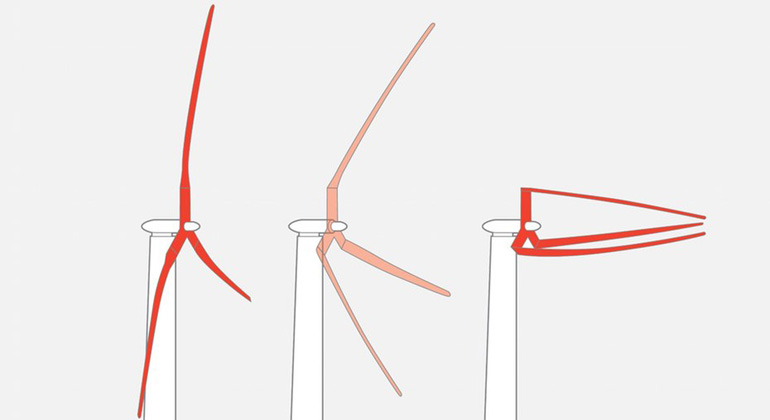Folding, modular rotor blades designed for giant wind turbines
Sandia National Laboratories has revealed its plans for the extreme-scale Segmented Ultralight Morphing Rotor (SUMR). The turbines are built to deal with the extreme conditions of an offshore farm, featuring a folding build to cope with high winds.
The majority of current US wind turbines produce between 1 and 2 MW of power, using blades around 165 ft (50 m) long, and even the largest commercially-available models are only capable of 8 MW output, with rotors measuring 262 ft (80 m). Sandia plans to make its new blades much larger, two and half times that of any rival, producing a whopping 50 MW of power.
Of course, when you’re building that big, there are some significant challenges to overcome. Manufacturing and transporting large scale rotor blades is expensive and logistically difficult. To combat that, the new blades can be manufactured in segments, lowering costs and making them much easier to transport.
The new design also places the turbines downwind of the tower, rather than in the upwind position of conventional designs. When dangerously high winds strike, the blades are able to fold in to avoid damage, opening back out to take maximize energy production once the weather calms down.
The design is also inspired by the way that palm trees move in storms. The trunk features a segmented build with a series of cylindrical shells, which able to bend in the wind without compromising segment stiffness.
Exascale turbines such as this could have a huge impact on green energy production. The research was funded by the Department of Energy’s (DOE) Advanced Research Projects Agency Energy program, and could provide a good way to reach its plan to provide 20 percent of the country’s energy from wind by 2030.
“The US has great offshore wind energy potential, but offshore installations are expensive, so larger turbines are needed to capture that energy at an affordable cost,” said the lead blade designer on the project, Todd Griffith.








